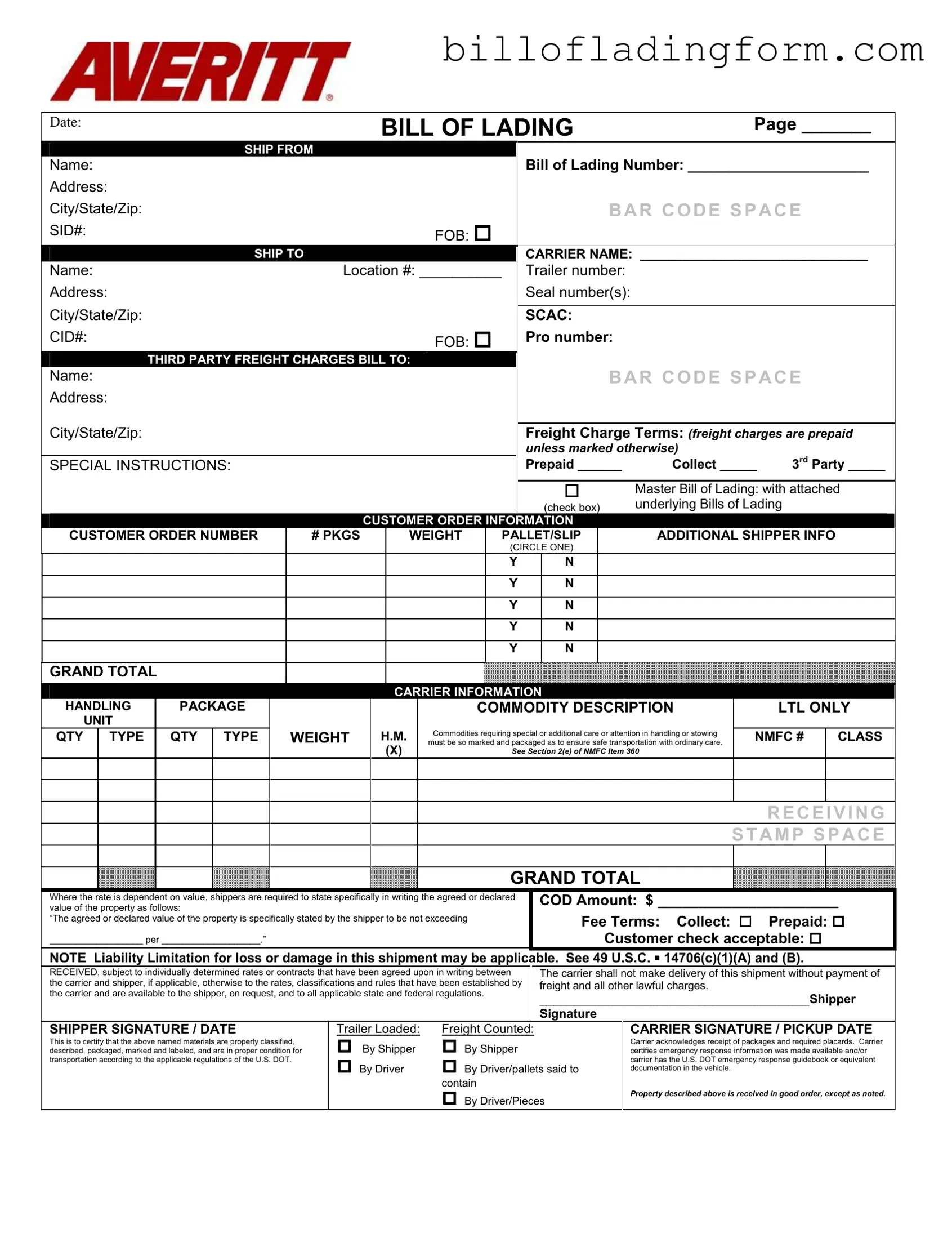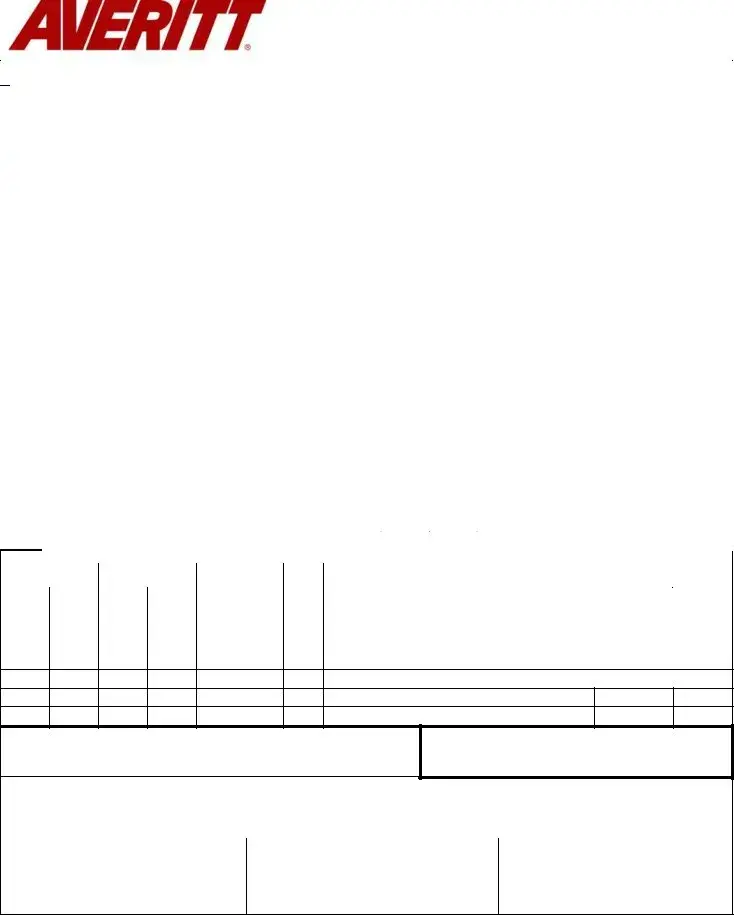The Bill of Lading Averitt form serves as a crucial document in the shipping and freight industry, encapsulating essential information that governs the transportation of goods. This form not only identifies the shipper and recipient but also details the specifics of the shipment, including the Bill of Lading number, addresses, and the carrier's name. A barcode space is designated for easy tracking, while sections for freight charge terms clarify whether charges are prepaid, collected, or billed to a third party. Special instructions can be noted, ensuring that any unique handling requirements are communicated effectively. Additionally, the form includes customer order information, which encompasses details such as package counts, weights, and any special commodity descriptions necessary for compliance with regulations. For items requiring careful handling, shippers must indicate the appropriate classifications and ensure that the goods are packaged accordingly. The Bill of Lading Averitt form also addresses liability limitations and the necessity for agreed-upon values, which are critical for both the shipper and carrier in the event of loss or damage. Signatures from both the shipper and carrier confirm the receipt of goods in good order, establishing a mutual understanding of the shipment’s condition and compliance with applicable regulations.

